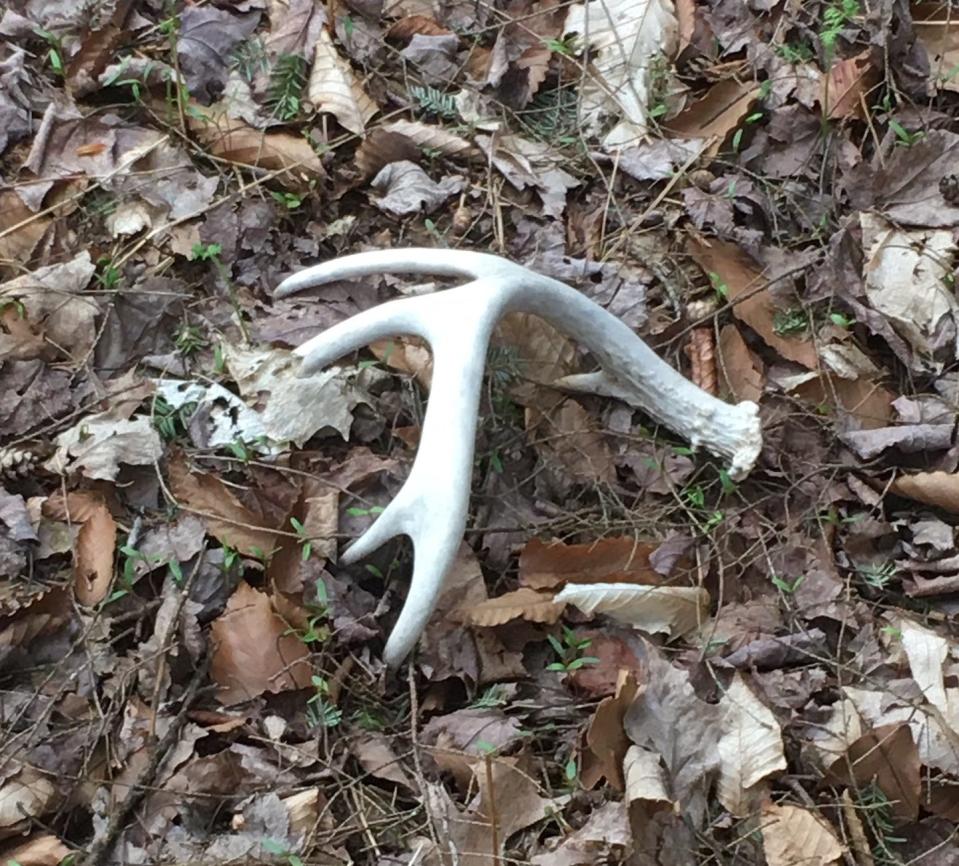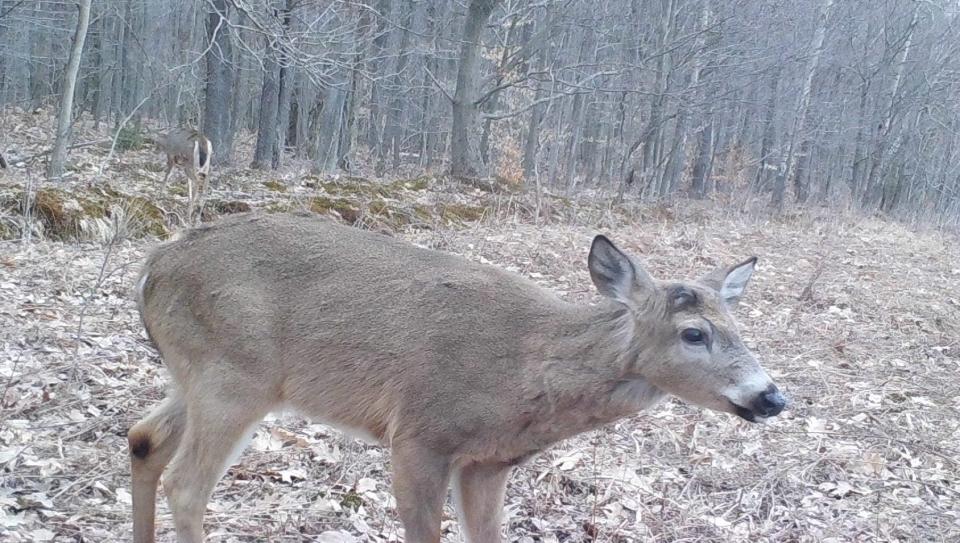Shed season is finally here: How to find whitetail deer antlers this spring
“Shed season” is finally here.
Well, one could take that a couple ways.
Some would guess that we are preparing for spring cleanup now that winter is on the run and it’s finally March.
But many others across the Northeast and Midwest are ready to take to the woods and fields, now that the last of winter’s snows is receding, exposing those recently dropped white deer antlers.
Nope, enthusiasm is not so much for the mower and the rake, but to once again hoof it through the woods and fields, hoping to find those iconic, calcified symbols of the whitetail deer, its shed or castoff antlers.
All antlered bucks lose their antlers through a natural process. And one might think that a white deer antler would be relatively easy to find, because they stand out in such stark contrast to the brown leaves and flattened grasses of late winter and early spring.
But finding sheds is not as easy as it may seem.

One thing that makes finding antlers difficult is that deer hunters are not the only critters that enjoy sheds, sometimes called “drops.”
Squirrels, mice and even porcupines eagerly chew any antler or bone they can find in their constant hunt for minerals and salts.
Shed antlers do not usually last long, once they hit the ground here in the mineral deficient uplands. But then again, once in a great while we will find an antler that has mysteriously survived more than one season. Old drops I’ve found are usually stained brown with maybe a bit of moss trying to eke out a living on the ossified antler.
The tips of tines of newly dropped antlers often show the wear and tear of little rodent teeth, leaving their telltale scrimshaw carvings.
Once the snow goes, shed hunters get needed exercise to once again stretch out and climb the hills and check out the field edges after months of winter lethargy.
Hunting for drops is a good way to scout for deer sign to learn more about local movement patterns and bedding areas. Don’t have to worry about spooking deer now, and we can once again explore these buck safety zones.
Rubs and scrapes of the past fall, each key signs for deer hunters, show themselves starkly at this time, too.
Soon, the woods will be “greening up," and once the cover leafs out, those evident signs of the past rut quickly fade.
I like hunting for shed antlers around field edges, bordered by the overgrown buckthorn and hawthorn shrubs.
Evidently, when bucks enter the thick cover, maybe even on the edge of their bedding areas, the rigid branches of these thorny bushes knock the loose antlers free.
On a number of occasions while shed hunting I have found antlers above the ground in thick thorn bushes, so when near thick cover, remember to look up, and not just with eyes on the ground.
I remember finding one antler up in a thorn bush that was a bone-white four-point rack, and stuck out in such sharp contrast to the dark background of the brush. I saw it a long ways away.

Whitetails utilize the blackish deep purple berries of the buckthorn as winter food. And as winter deepens, the base of the deer rack where it attaches to the skull becomes weaker. And as they feed, deer push their heads into the bushes to get the black berries, and sometimes leave their horns in exchange.
Another good place to look for sheds is on a trail between a known whitetail bedding area and a winter food source like an uncut soybean field, winter wheat, old apple trees, and recently timbered property.
Whitetails love to nip off and browse apple buds and twigs in the late winter. So I check under every old apple tree in the woods that I stumble upon.
Whitetail antlers fall off their heads at different times.
Some years, deer shed their antlers at the end of the hunting season, while other years, many still carry their horns through February, March and once in a while even April.
It depends on the individual deer.
Researchers say that a trigger to the shedding of antlers is a lowering of a buck’s testosterone level, just the opposite of in the fall when hormone levels peak.
A buck’s skull shows a bloody spot when an antler is cast at the base around a corona called the pedicle. A couple times I have found sheds with pinkish red traces, pointing to their obvious freshness.
Most of the time, sheds are picked up as loners. Bucks usually drop one shed then a few days or even a week later, the other one falls off.
But on a couple of instances I can remember excitedly finding one antler ... then looking a bit further and finding the other nearby.
Oak Duke writes a weekly column appearing on the Outdoors page of The Spectator.
This article originally appeared on The Evening Tribune: Shed season is here: How to find whitetail deer antlers this spring

